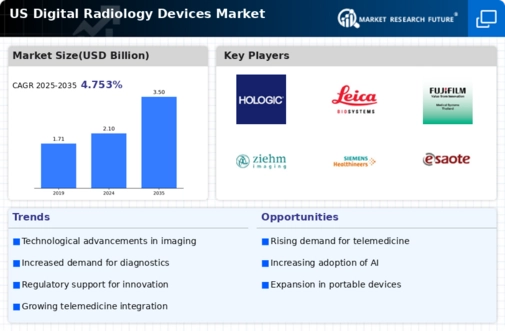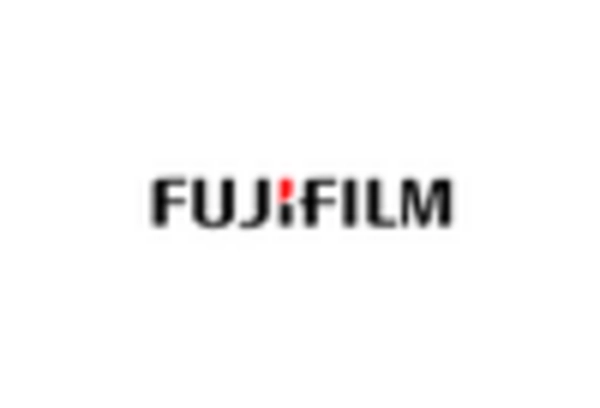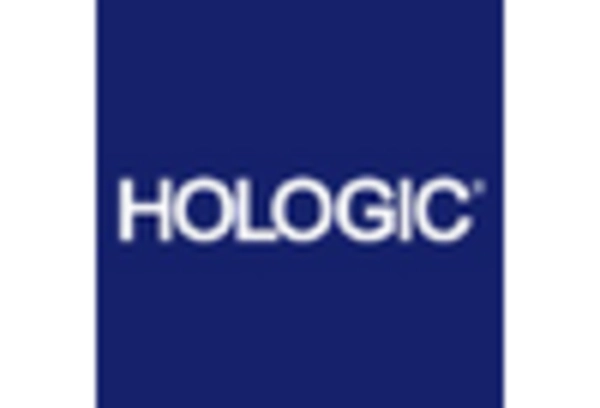Rising Demand for Diagnostic Imaging
The increasing prevalence of chronic diseases in the US is driving the demand for diagnostic imaging solutions, thereby impacting the digital radiology-devices market. As healthcare providers seek to enhance patient outcomes, the need for accurate and timely diagnostics becomes paramount. According to recent data, the market for diagnostic imaging is projected to grow at a CAGR of approximately 6.5% through 2027. This growth is largely attributed to the aging population and the rising incidence of conditions such as cancer and cardiovascular diseases. Consequently, healthcare facilities are investing in advanced digital radiology devices to meet this demand, which is likely to further propel the market forward.
Growing Focus on Preventive Healthcare
The shift towards preventive healthcare in the US is significantly influencing the digital radiology-devices market. As healthcare systems emphasize early detection and prevention of diseases, the demand for advanced imaging solutions is likely to rise. This trend is supported by initiatives aimed at increasing awareness and accessibility of preventive screenings. For example, the US Preventive Services Task Force recommends regular screenings for various conditions, which in turn drives the need for digital radiology devices. The market is projected to expand as healthcare providers invest in technologies that facilitate early diagnosis, ultimately improving patient outcomes and reducing long-term healthcare costs.
Rising Awareness of Radiology Benefits
The increasing awareness of the benefits of radiology in diagnosing and treating medical conditions is positively impacting the digital radiology-devices market. Educational campaigns and outreach programs are helping to inform both healthcare professionals and patients about the advantages of advanced imaging technologies. As a result, more patients are seeking radiological services, which is likely to drive demand for digital radiology devices. Furthermore, the growing recognition of the role of radiology in personalized medicine is expected to enhance the market's growth trajectory. This heightened awareness could lead to increased utilization of imaging services, thereby benefiting the overall market.
Integration of Advanced Imaging Technologies
The integration of advanced imaging technologies, such as 3D imaging and digital tomosynthesis, is transforming the digital radiology-devices market. These technologies enhance the accuracy and efficiency of imaging procedures, leading to improved diagnostic capabilities. For instance, 3D mammography has shown to increase cancer detection rates by up to 40% compared to traditional methods. As healthcare providers adopt these innovative solutions, the market is expected to witness substantial growth. The incorporation of such technologies not only improves patient care but also streamlines workflow in radiology departments, making them more efficient and effective.
Increased Investment in Healthcare Infrastructure
The ongoing investment in healthcare infrastructure across the US is a key driver for the digital radiology devices market. Government initiatives and private sector funding are contributing to the modernization of healthcare facilities, which includes upgrading imaging equipment. According to estimates, the US healthcare infrastructure spending is expected to reach $1 trillion by 2027. This influx of capital is likely to enhance the capabilities of healthcare providers, enabling them to adopt state-of-the-art digital radiology devices. As facilities upgrade their technology, the demand for advanced imaging solutions will continue to grow, further stimulating market expansion.

















Leave a Comment